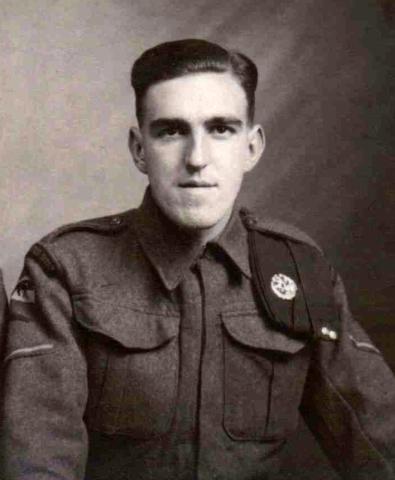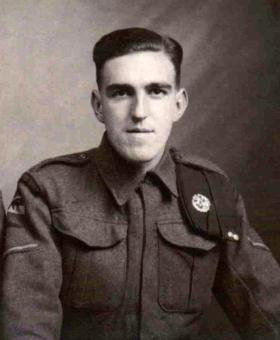Peter Burke Hill was the son of Henry Hill and Elizabeth ('Betty') Hill, of Darlington, Co Durham. When Peter was just seven years old, his father sadly passed away while playing the violin in a concert.
He volunteered for The Glider Pilot Regiment, while serving with the Army during World War II, and upon completion of his initial flying training was selected for C Squadron, under the command of Major ‘Dickie’ Dale, which operated Hamilcar gliders.
On D Day, 6 June 1944, Peter Hill and his second pilot, Sergeant ‘Tony’ Openshaw, flew a Hamilcar glider from RAF Tarrant-Rushton in Dorset to Landing Zone N, near Ranville in Normandy, as part of Operation Mallard, 6th Airborne Division’s reinforcement lift.
They landed successfully, with a Tetrarch light tank of the 6th Airborne Armoured Reconnaissance Regiment onboard, and after a few days were withdrawn back to England to prepare for further operations.
They took off on their next operational sortie on 17 September 1944, this time with two Bren Gun Carriers of the 1st Battalion, The Border Regiment, to landing Zone Z near Wolfheze in Holland as part of Operation Market-Garden. The Battalion formed part of the 1st Airborne Division, tasked with capturing the Rhine crossings at Arnhem.
After delivering the Bren Gun Carriers to the LZ, Peter and ‘Tony’ joined the rest of C Squadron for their secondary task - the defence of the south side of LZ S to the north of Wolfheze.
They fought throughout the battle of Arnhem and helped to maintain the defensive perimeter at Oosterbeek until their withdrawal south of the river on the night of 25/26 September.
Sgt David Hartley, who was also from Darlington and a member of C Sqn, met up with Peter in the queues waiting for the assault boats to arrive and take them across the river:
“Peter told me that he could not swim and was very frightened of the water. I told him I would look after him. The first thing we did was take off our boots, and next was sit together right on the edge of the boat. We had just started when we received a mortar bomb right in the middle of the assault boat. We were in the water before we knew it. Peter was a very good pupil, I soon got him into the long tow position and he was using his legs quite well, and most important we were getting away from the boat crossing area. The current was very strong and our plan was to let it help us all it could. Peter was starting to lag, the other side, what we could see of it, did not seem to be any nearer and I could really feel my shoulder stiffening up. I had a job to hold Peter, and after a brief struggle I lost him. I cannot remember getting out of the water, changing my clothes, or being taken to a field hospital where a doctor took the rest of the shrapnel out of my shoulder.”
Peter Hill died on 25/26 September, aged 22 years, and his body was subsequently recovered from the River Lek near Ravenswaaij on 18 November 1944. He is now buried in the South Eastern part of the Roman Catholic cemetery at Maurik in the Netherlands.
Tragically, Peter's mother Betty was left without her husband and son after his death. She continued to live in Starmer Crescent, Darlington, until her death in the 1960s. Betty gave her blessing for Peter's grave to remain in the Maurik cemetery. Peter's second cousin David later explained: "I have visited Maurik and met the kind people who tend his grave. It is truly humbling. I remarked to them that I always felt for Peter lying alone away from his comrades and one of them, Hein Scharma, replied: "he has family here now, he is not alone".
Compiled from the research of Bob Hilton
With additional information from Chris Lloyd's article in The Northern Echo: https://www.thenorthernecho.co.uk/news/24598541.darlington-glider-pilot-died-arnhem-80-years-ago/
Read More


Latest Comments
There are currently no comments for this content.
Add Comment
In order to add comments you must be registered with ParaData.
If you are currently a ParaData member please login.
If you are not currently a ParaData member but wish to get involved please register.